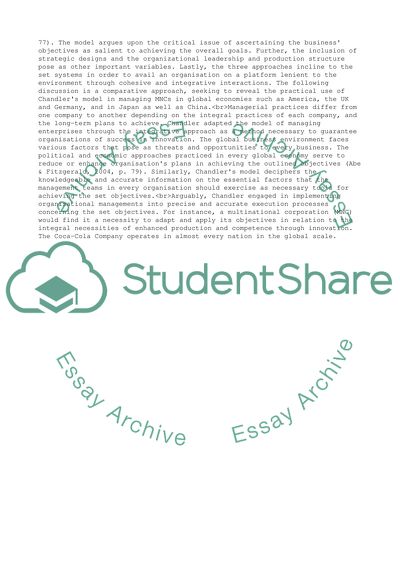Cite this document
(Does Chandlers model of integrated managerial enterprise explain the Essay, n.d.)
Does Chandlers model of integrated managerial enterprise explain the Essay. https://studentshare.org/management/1813725-does-chandlers-model-of-integrated-managerial-enterprise-explain-the-organization-of-large-companies-in-major-economies-and-the-long-term-competitiveness-of-nations
Does Chandlers model of integrated managerial enterprise explain the Essay. https://studentshare.org/management/1813725-does-chandlers-model-of-integrated-managerial-enterprise-explain-the-organization-of-large-companies-in-major-economies-and-the-long-term-competitiveness-of-nations
(Does Chandlers Model of Integrated Managerial Enterprise Explain the Essay)
Does Chandlers Model of Integrated Managerial Enterprise Explain the Essay. https://studentshare.org/management/1813725-does-chandlers-model-of-integrated-managerial-enterprise-explain-the-organization-of-large-companies-in-major-economies-and-the-long-term-competitiveness-of-nations.
Does Chandlers Model of Integrated Managerial Enterprise Explain the Essay. https://studentshare.org/management/1813725-does-chandlers-model-of-integrated-managerial-enterprise-explain-the-organization-of-large-companies-in-major-economies-and-the-long-term-competitiveness-of-nations.
“Does Chandlers Model of Integrated Managerial Enterprise Explain the Essay”. https://studentshare.org/management/1813725-does-chandlers-model-of-integrated-managerial-enterprise-explain-the-organization-of-large-companies-in-major-economies-and-the-long-term-competitiveness-of-nations.


